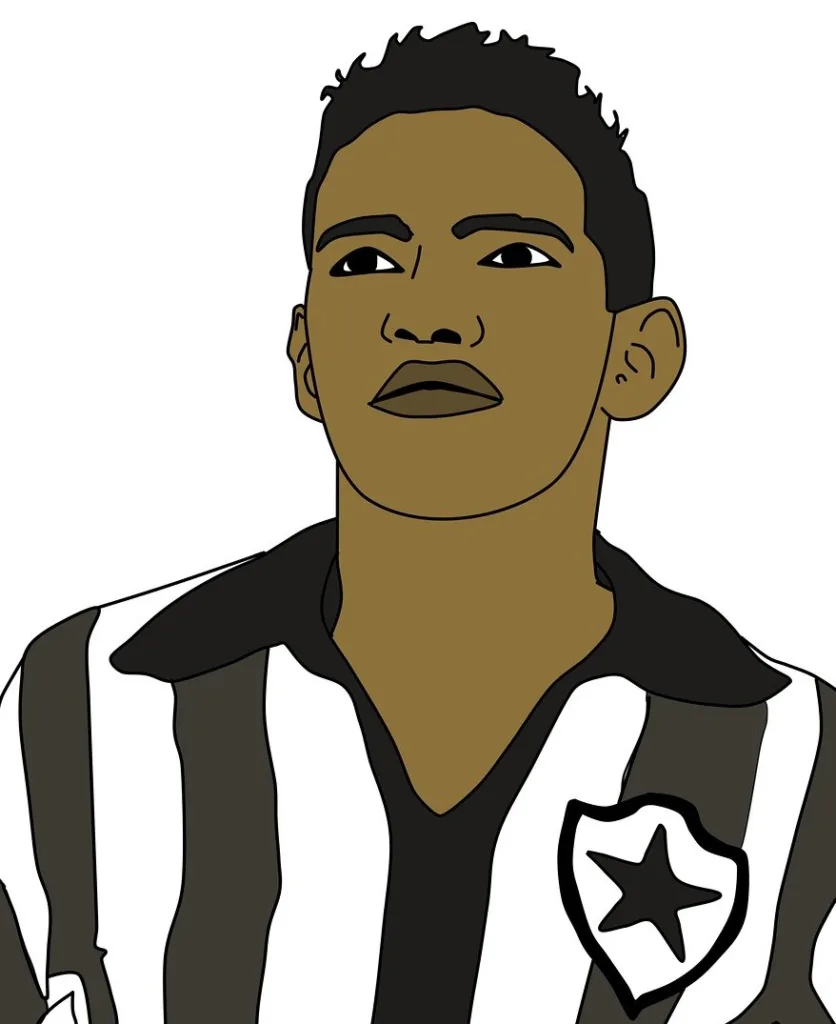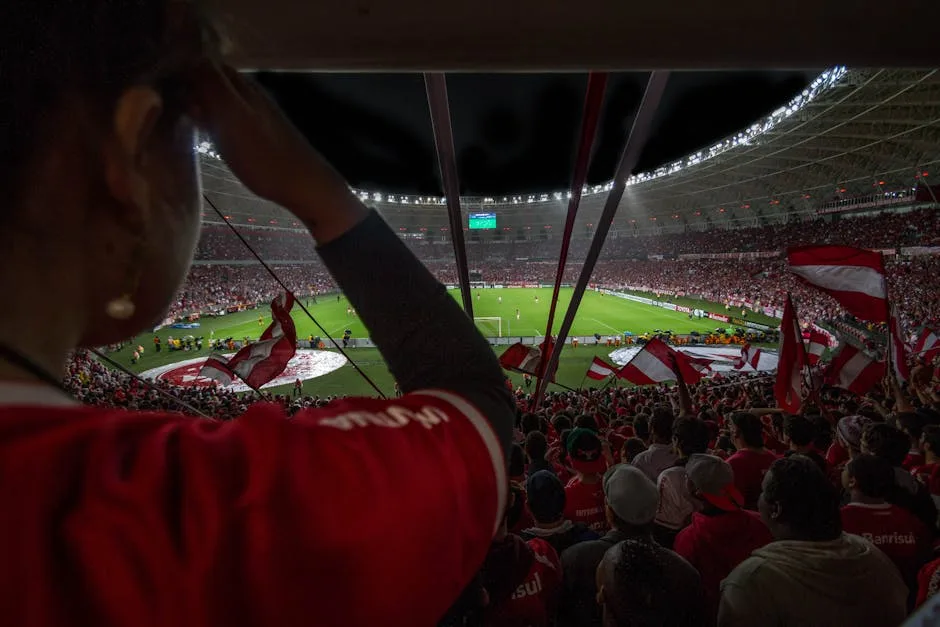- The Rhythm of the Beautiful Game: Brazil’s Gift to the World
- Pelé: The King Who Wore the Crown
- Garrincha: The Joyful Anomaly
- The Golden Era’s Supporting Cast of Superstars
- 1970: The Beautiful Game Perfected
- The Architects of Art
- Carrying the Torch: The Post-Pelé Generations
- The Enduring Rhythm of Joga Bonito
The Rhythm of the Beautiful Game: Brazil’s Gift to the World
There’s a certain magic to brazilian soccer, a rhythm and a flair that feels almost mythical. It’s more than just a sport; it’s a dance, an art form known globally as Joga Bonito—the beautiful game. But this wasn’t an accident. This global phenomenon was built on the shoulders of giants, a lineage of players who didn’t just play soccer, they reinvented it. From the favelas to the world’s biggest stadiums, these legends shaped the very soul of the sport. And at the heart of this story are two names that resonate like a drumbeat: Pelé and Garrincha.
To understand their impact, we have to go back to a moment of national heartbreak. The 1950 World Cup final, lost to Uruguay in their own backyard at the Maracanã, was a wound that cut deep. It was a trauma that led to a profound soul-searching. Out of that pain rose a new generation, determined not just to win, but to do so with a style that was uniquely, joyfully Brazilian.
Pelé: The King Who Wore the Crown
When a 17-year-old boy named Edson Arantes do Nascimento, or Pelé, burst onto the scene at the 1958 World Cup, the world wasn’t ready. He was the complete package, a player so far ahead of his time it was staggering. He was strong, fast, and unbelievably athletic. He could score with his right foot, his left foot, and with headers that defied gravity. Pelé wasn’t just a goalscorer; he was a creator, a visionary who saw the game in a way no one else did.
His statistics are the stuff of legend—over 1,000 career goals and the only player in history to win three World Cups (1958, 1962, 1970). But numbers alone can’t capture his essence. To watch Pelé was to witness perfection in motion. He combined raw power with delicate skill, making the impossible look routine. He became soccer’s first global superstar, a symbol of Black excellence and a source of immense pride for Brazil. He didn’t just put Brazil on the soccer map; he made Brazil the map.
Garrincha: The Joyful Anomaly
If Pelé was the perfect athlete, his contemporary, Garrincha, was the perfect imperfection. Born with a deformed spine and legs that were bent and of different lengths, he was told he’d be lucky to walk, let alone play soccer. Yet, he turned this supposed weakness into his greatest strength. Garrincha was the ultimate dribbler, a force of nature who played with a childlike glee that was infectious.
His game was simple yet unstoppable. He would feint one way, shimmy his body, and then explode past defenders, often leaving them tangled in their own feet. It was a move they all knew was coming, yet no one could stop it. They called him Alegria do Povo—the Joy of the People—because he played for them. He was the underdog, the trickster, the embodiment of pure, uncoached genius. When Pelé was injured during the 1962 World Cup, it was Garrincha who stepped up and single-handedly carried Brazil to victory in one of the greatest individual tournament performances ever seen. The legend is that Brazil never lost a single match when Pelé and Garrincha were on the field together—a testament to their unparalleled combination of disciplined genius and chaotic joy.
The Golden Era’s Supporting Cast of Superstars
While Pelé and Garrincha were the headliners, the golden era of 1958-1970 was filled with pioneers who changed the game. You can’t tell the story of Brazilian soccer without them.
- Didi: The midfield maestro and the team’s brain. He was the inventor of the folha seca (dry leaf) free kick, a dipping, swerving shot that baffled goalkeepers. He was the calm, cerebral presence that balanced the team’s explosive flair.
- Nílton Santos & Djalma Santos: These two weren’t just defenders; they were the first true attacking full-backs. At a time when defenders were expected to do one thing—defend—they bombed forward, adding another layer to Brazil’s already potent attack and creating the blueprint for the modern full-back.
- Vavá: The powerful and opportunistic striker. He holds the incredible distinction of scoring in two different World Cup finals (1958 and 1962), a testament to his clutch performances on the biggest stage.
1970: The Beautiful Game Perfected
If you ask soccer purists to name the greatest team of all time, many will point to Brazil’s 1970 World Cup squad without hesitation. It was the culmination of everything that made Brazilian soccer special, a team that played with a symphonic harmony. With Pelé in his final tournament, a new cast of stars had emerged to play alongside him, creating a lineup that was almost unfairly talented.
The Architects of Art
This team was more than a collection of great players; they were a collective masterpiece. Jairzinho, the Hurricane, achieved the unique feat of scoring in every single match of the tournament. Rivelino, with his trademark mustache and thunderous left-foot shot, was the master of the elástico, a move he perfected and brought to the world stage. Tostão was the intelligent, visionary forward, a perfect creative partner for Pelé. And leading them all was the captain, Carlos Alberto Torres, who capped off their victory with perhaps the most iconic team goal in soccer history—a flowing, 10-pass move that he finished with a blistering strike.
Carrying the Torch: The Post-Pelé Generations
How do you follow perfection? The generations that came after 1970 faced immense pressure to live up to that legacy. The 1982 team, in particular, is remembered as one of the greatest sides to *not* win the World Cup. Led by the brilliant duo of Zico and Sócrates, they played a brand of soccer that was just as artistic as their 1970 predecessors.
- Zico: Often called the “White Pelé,” he was a phenomenal number 10. A dead-ball specialist with sublime vision, he was the creative engine of that incredible ’82 side.
- Sócrates: “The Doctor” was as much a philosopher as he was a footballer. Tall, elegant, and impossibly cool, he orchestrated the midfield with his signature backheels and no-look passes, all while being a political activist off the field.

While that team fell short, the legacy of winning eventually returned. The pragmatic 1994 team, led by the explosive striker Romário and his partner Bebeto, brought the trophy back to Brazil. Then came 2002, and the era of the “Three R’s.” An unstoppable trio of Ronaldo Nazário, Rivaldo, and Ronaldinho mesmerized the world, blending raw power, incredible skill, and infectious smiles to reclaim their spot at the top of the world.
The Enduring Rhythm of Joga Bonito
From Pelé’s completeness to Garrincha’s pure joy, from Zico’s artistry to Ronaldo’s power, the thread that connects all these legends is a commitment to beauty. They taught the world that soccer could be more than just a game of tactics and results. It could be an expression of culture, creativity, and happiness. They didn’t just win; they inspired. They shaped world soccer by proving that you could be the best while playing with a smile on your face, a samba in your step, and a ball at your feet.






